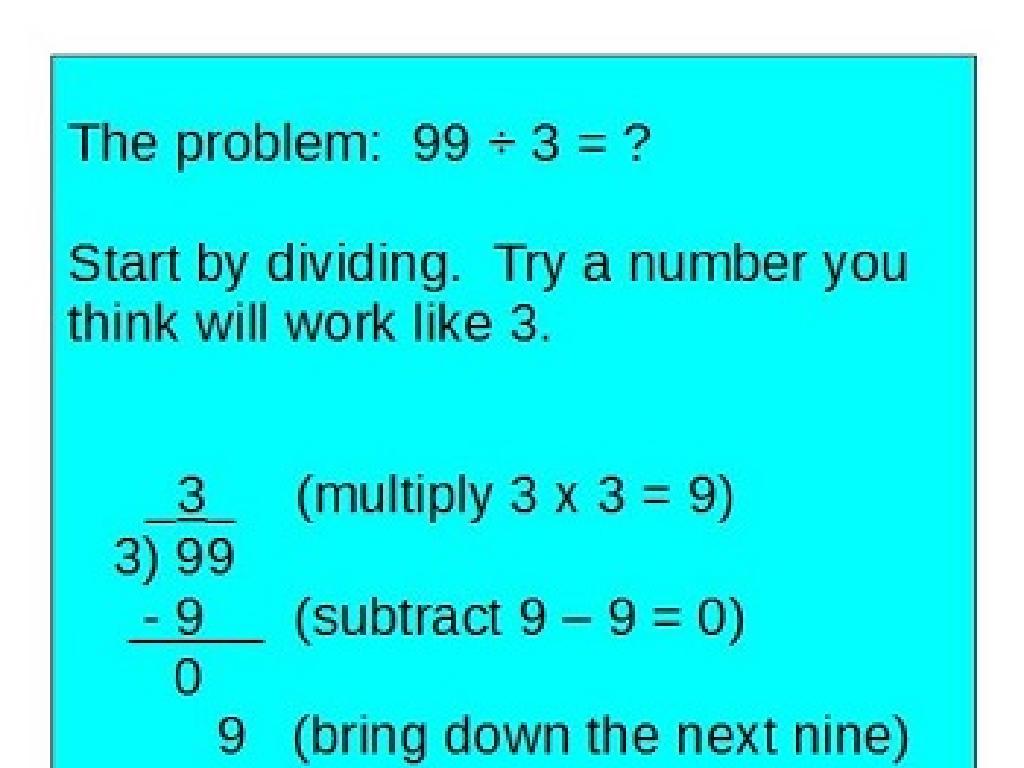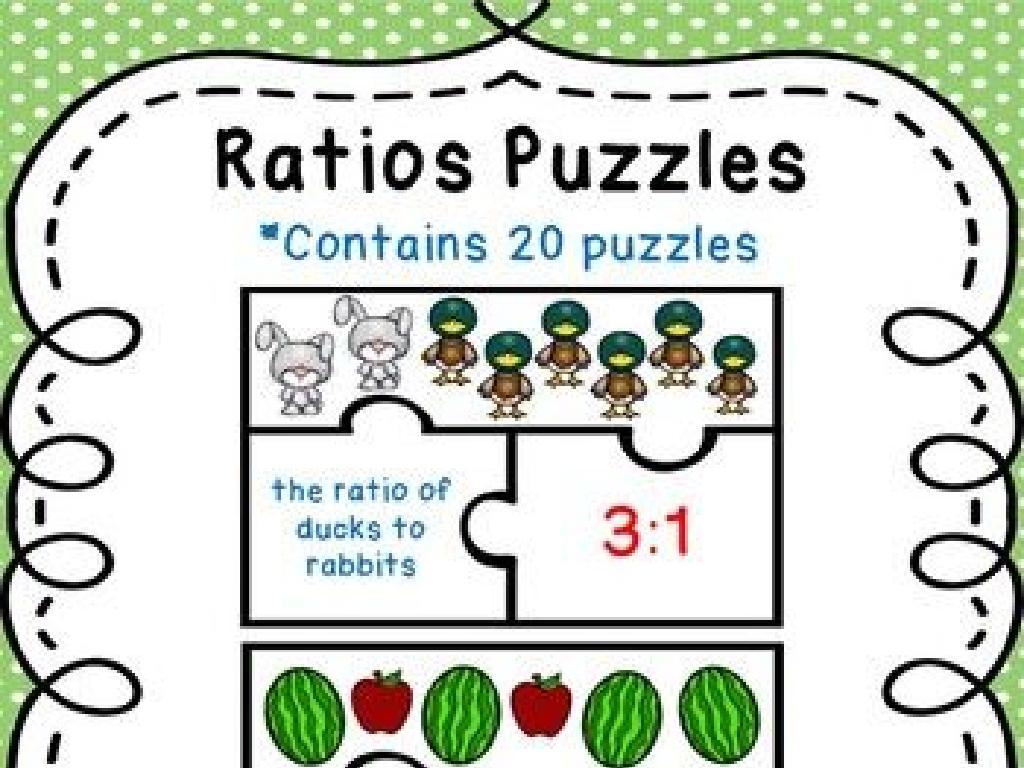Correct Errors With Verb Mood
Subject: Language arts
Grade: Seventh grade
Topic: Verb Tense And Mood
Please LOG IN to download the presentation. Access is available to registered users only.
View More Content
Mastering Verb Mood
– Understanding verb tense and mood
– Verb tense shows time; mood reflects a state of being or reality.
– Importance of correct verb mood
– Using the right mood helps convey the correct meaning and intention.
– Today’s focus: Verb mood errors
– We’ll identify and fix incorrect uses of indicative, imperative, and subjunctive moods.
– Strategies to correct mood errors
– Use context to determine the right mood; practice with examples.
|
This slide introduces the concept of verb mood, which is crucial for expressing different states of being or reality in writing and speech. Understanding the difference between verb tense and mood allows students to communicate more effectively. Today, we’ll focus on identifying and correcting errors in verb mood, which is essential for clarity and precision in language. We will explore the indicative mood for factual statements, the imperative mood for commands, and the subjunctive mood for hypotheticals or wishes. By providing examples and practice exercises, students will learn to use context to choose the appropriate mood and improve their writing skills.
Exploring Verb Moods
– Define verb mood
– Verb mood expresses the speaker’s attitude toward the action/state of the verb.
– Explore types of verb moods
– Indicative: states facts, Imperative: gives commands, Subjunctive: wishes/doubts, Conditional: ‘if’ scenarios, Interrogative: asks questions.
– Examples for each mood
– Indicative: ‘He runs daily.’, Imperative: ‘Run daily!’, Subjunctive: ‘If he were faster…’, Conditional: ‘If he runs daily, he’ll improve.’, Interrogative: ‘Does he run daily?’
– Practice identifying moods
|
This slide introduces the concept of verb mood, which is essential for students to understand how verbs can express different meanings in various contexts. Begin with the definition of verb mood and explain that it shows the speaker’s attitude or intent. Discuss the five types of verb moods: indicative, imperative, subjunctive, conditional, and interrogative, providing clear examples for each. Use relatable scenarios to illustrate the moods. After presenting the examples, engage the students in an activity where they identify the mood of verbs in given sentences. This will help solidify their understanding and prepare them for more complex sentence structures.
Mastering Verb Moods: Indicative
– What is Indicative Mood?
– It states facts or asks questions, like ‘He walks to school.’
– Examples of Indicative Mood
– ‘The cat sleeps all day.’ or ‘Do you play the piano?’
– Common Indicative Mood errors
– Mixing up moods, such as using subjunctive instead of indicative.
– Tips to use Indicative Mood correctly
– Always match the mood to the function of the sentence.
|
The indicative mood is used for stating facts or asking questions, which is the most common mood in English. When teaching, provide clear examples of the indicative mood, such as ‘She studies every night’ for a fact, or ‘Are they coming to the party?’ for a question. Highlight common errors, like using ‘was’ instead of ‘were’ in a hypothetical statement, which actually requires the subjunctive mood. Offer tips for recognizing the function of a sentence to choose the correct mood, emphasizing the importance of context. Encourage students to create their own sentences and identify the mood used, correcting any errors they may find.
Understanding the Imperative Mood
– Imperative mood for commands
– Examples of imperative sentences
– ‘Sit down.’, ‘Please pass the salt.’, ‘Finish your homework.’
– Identifying errors in imperative mood
– Look for verbs that don’t issue a direct command or request.
– Correcting imperative mood errors
– Ensure the verb gives a clear instruction or request.
|
The imperative mood is used to give commands, make requests, or offer invitations. It’s important for students to recognize the direct nature of this mood and its common use in everyday language. When identifying errors, students should check if the verb in the sentence is delivering a command or request. If it’s not, then it’s likely not in the imperative mood. To correct errors, students should revise the sentence to ensure the verb is in its base form and that it conveys a clear command or request. For example, changing ‘You will clean your room.’ to ‘Clean your room.’ makes it imperative. Practice with various examples will help students grasp the concept.
Mastering the Subjunctive Mood
– Understanding the subjunctive mood
– Used for wishes, doubts, or hypotheticals
– Examples of subjunctive usage
– ‘I wish I were taller’ uses the subjunctive mood
– Identifying subjunctive errors
– Spot incorrect verb forms in hypothetical situations
– Correcting subjunctive mistakes
– Learn to replace incorrect verbs with subjunctive forms
|
The subjunctive mood is a way to express wishes, suggestions, or actions that are not necessarily real but are imagined or desired. It’s important for students to recognize that the subjunctive mood often uses the base form of the verb, such as ‘were’ instead of ‘was’, even in singular form. Provide clear examples to illustrate proper usage, and then guide students through exercises where they identify and correct errors in sentences. Encourage them to think about whether the sentence expresses a wish, doubt, or hypothetical situation and to apply the rules of the subjunctive mood accordingly. This will help them understand the nuances of English grammar and improve their writing skills.
Practice Time: Mastering Verb Moods
– Identify sentence moods
– Correct mood errors
If a sentence mood doesn’t match its purpose, fix it. For example, ‘I wish I am taller’ should be ‘I wish I were taller.’
– Create sentences with moods
Use indicative, imperative, interrogative, conditional, or subjunctive to express different scenarios.
– Share and discuss creations
|
This slide is for a class activity focused on verb moods. Students will first identify the mood of given sentences, whether indicative, imperative, interrogative, conditional, or subjunctive. Then, they will correct any sentences where the mood is incorrectly used, ensuring the mood matches the sentence’s purpose. Next, students will create their own sentences, experimenting with different verb moods to express a variety of meanings and situations. Finally, they will share their sentences with the class, providing an opportunity for peer learning and discussion. As a teacher, prepare to guide them through examples, provide feedback, and encourage creativity in their sentence construction. Possible activities include mood identification exercises, sentence correction worksheets, and creative writing prompts that require the use of different moods.
Class Activity: Verb Mood Charades
– Write sentences with different moods
– Act out the sentences in groups
– Guess the mood being portrayed
– Discuss the use of each mood
– Why was indicative, imperative, or subjunctive used?
|
This interactive class activity is designed to help students understand verb moods through a fun game of charades. Each student will write a sentence on a slip of paper using either the indicative, imperative, or subjunctive mood. In groups, students will take turns acting out the sentences without speaking, while the rest of the class guesses the mood. After each performance, there will be a group discussion to explore why the specific verb mood was used in the sentence. This will reinforce their understanding of the correct application of verb moods in various contexts. Possible sentences for indicative: ‘The cat sleeps on the mat.’ For imperative: ‘Please sit down.’ For subjunctive: ‘If I were taller, I would reach the top shelf.’ Encourage creativity and ensure that students explain their reasoning during the discussion phase.
Wrapping Up: Verb Moods & Homework Task
– Recap on verb moods
– Importance of verb moods
– Homework: Craft a short story
– Write a creative story using different verb moods
– Underline verbs & identify moods
– Practice by finding and labeling each verb’s mood
|
As we conclude, remind students of the five verb moods: indicative, imperative, interrogative, conditional, and subjunctive. Emphasize how verb moods help us express different states of reality and intent in our communication. For homework, students should write a short story, which will serve as a practical application of their understanding of verb moods. They must underline each verb used and identify its mood. This exercise will reinforce their ability to recognize and use verb moods correctly in various contexts. Encourage creativity in their stories and remind them that the goal is to demonstrate their grasp of verb moods in writing. Provide examples of sentences with different verb moods to guide them.






